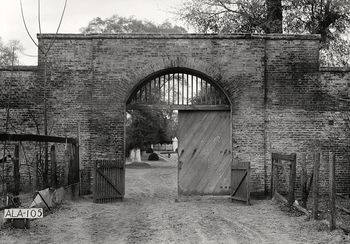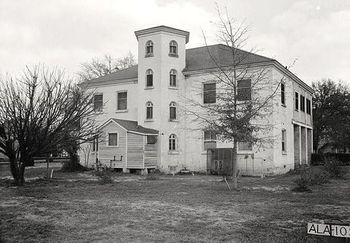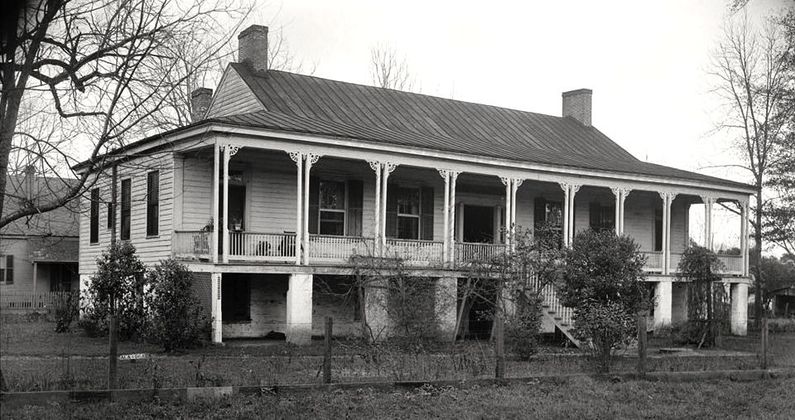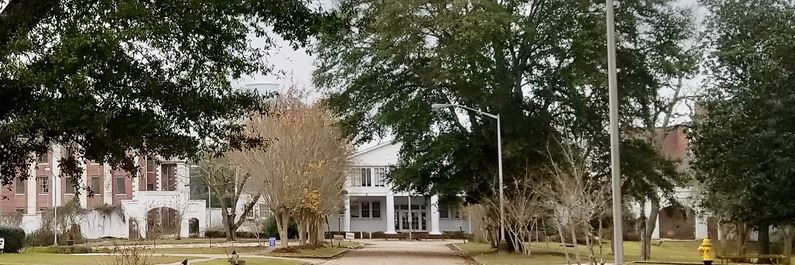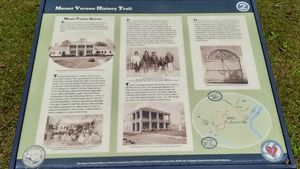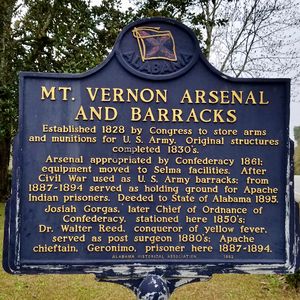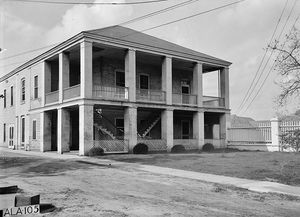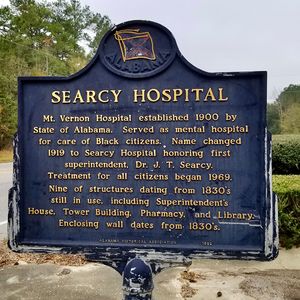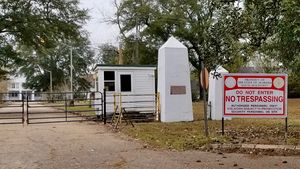Mount Vernon Arsenal (2)
|
Mount Vernon Arsenal (2) (1828-1894) - A U.S. Army arsenal established in 1828 in Mobile County, Alabama. Captured by Confederate forces in 1861 and held by them until the end of the U.S. Civil War. Returned to a U.S. Arsenal after the war. Designated Mount Vernon Barracks in 1873. Abandoned in 1894 and deeded to the State of Alabama in 1895. HistoryThe arsenal was authorized by Congress in 1824, completed in 1828 and formally designated on 1 Jan 1829 as Mount Vernon Arsenal. The primary function of the arsenal in the early years was the assembly of guns manufactured elsewhere and the manufacture of ammunition. The site had earlier been occupied as a cantonment area for nearby Fort Stoddert which was sited on the banks of the Mobile River in an unhealthy location. The cantonment area was on high ground with a healthy water supply that proved ideal for the Arsenal.
U.S. Civil WarThe arsenal was seized by Alabama troops 4 Jan 1861 on orders from the Alabama governor. The arsenal commander, Captain Jesse l. Reno, surrendered the garrison without incident and the Alabama troops took it over. The arsenal became a Confederate arsenal until the end of the war. After the fall of New Orleans in 1862, many of the arsenal functions and the equipment were moved to the Selma Arsenal because it was further away from Union forces. The arsenal was returned to the Federal government at the end of the war in 1865.
Mount Vernon BarracksThe arsenal was redesignated as Mount Vernon Barracks on 25 Jul 1873. The barracks was used as a prison for some 396 captured Apache Indians who were relocated from Fort Pickens and Fort Marion (1) in Florida. The post served as a home for Apache Chief, Geronimo and 395 other Apache prisoners of war between 1887 and 1894. Thirteen Apache Indians who died at the post are now buried at Mobile National Cemetery.
ClosureMount Vernon Arsenal was abandoned in December 1894 and deeded to the State of Alabama in 1895 to be used for public purposes. On 11 Dec 1900, the property was set aside by the Alabama Legislature for public use as Mt. Vernon Hospital for the mental care of Black Citizens. It became Searcy Hospital in 1919, which operated at the site for more than 100 years. Treatment for all citizens started in 1969. The hospital closed in 2012.
Current StatusThe site was listed on the National Register of Historic Places in 1988 and fortunately, the historic buildings had been documented by historical architects as a part of the Historic American Buildings Survey (HABS) in 1935. The photos and documents from this survey can be seen on the Library of Congress website. The site today is closed to the public and patrolled by security guards who will not allow visitors on the site. You can drive up to the back gate of the hospital complex and observe at a distance the Arsenal walls and gates. At the turnoff to the back entrance, there is a double-sided Roadside Marker with one side devoted to the Mount Vernon Arsenal and the other side devoted to the Searcy Hospital. There is also an interpretive panel with some of the Arsenal history. The 1982 marker indicates that there were nine of the original 1830's buildings still in use at that time. There is a phone number on the front gate (251-605-7508).
See Also: Sources:
Links:
Visited: 21 Dec 2017
| ||||||
